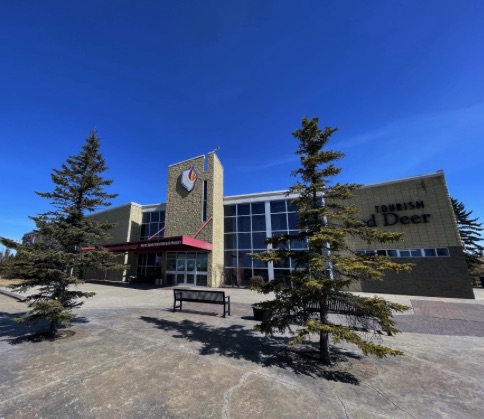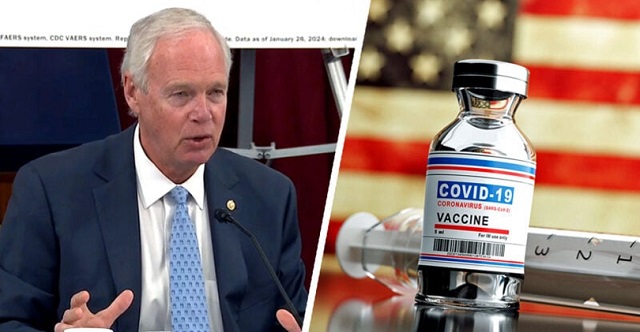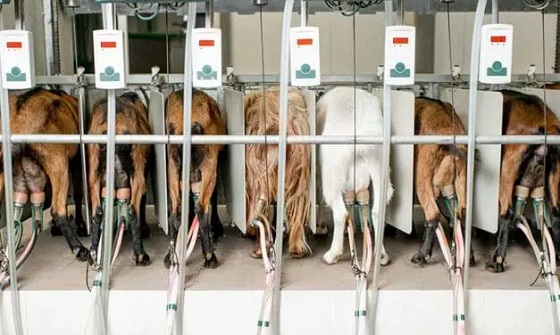Alberta
Alberta Sports Hall of Fame receives Alberta Heritage Award for Outstanding Achievement

From the Province of Alberta and the Alberta Sports Hall of Fame
Celebrating Albertans who protect our history
Sixteen Albertans and organizations are being recognized for helping preserve and celebrate Alberta’s history at the 2024 Heritage Awards.
The Heritage Awards, which are presented every two years, recognize the people, organizations and communities that are actively engaged in heritage promotion, protection and preservation. Awards are bestowed in three categories: Heritage Awareness, Heritage Conservation and Outstanding Achievement. This year’s awards presentation was held on Sept. 26 in Edmonton at the Queen Elizabeth II Building.
From Tracey Kinsella, Executive Director of the Alberta Sports Hall of Fame
We are excited to announce that we were honoured with the prestigious Outstanding Achievement Heritage Award last night, presented by the Government of Alberta. It was a truly memorable evening filled with celebration, and we are both humbled and proud to be recognized for our contributions.
This award is a testament to the hard work and dedication of our entire team, and we are grateful to be acknowledged among such incredible individuals and organizations.
Thank you to everyone who has supported us on this journey—we look forward to sharing this achievement with our community.
From the Province of Alberta

The 2024 Heritage Award recipients gathered on Sept. 26 to receive their awards.| The 2024 Heritage Award recipients gathered on Sept. 26 to receive their awards.
“Across the province, dedicated Albertans are keeping the stories of the people, places and events in our history alive. We are glad to have the opportunity to honor the Albertans who work passionately, often as volunteers, on conservation and awareness of Alberta’s heritage. Their commitment will help ensure that our stories continue to be told and remembered for many years to come.”
Alberta’s government salutes the winners and nominees of these Heritage Awards, and thanks them for their continued dedication to preserving, protecting and promoting Alberta’s unique heritage and culture.
The 2024 recipients are:
Heritage Awareness
- Beaver Hills Biosphere Region Association for the Beaver Hills Biosphere Video Project
- Clearwater County for the Nordegg Discovery Center Renewal Project
- YouthLink Calgary Police Interpretive Center for The Rogues’ Gallery
- Kyle Schole for the North Saskatchewan River (kisiskâciwani-sîpiy) Canadian Heritage River Designation Project
- Chief Sydney Lee Halcrow & Chief Roderick Willier for Oti Nekan – Treaty No. 8 125th Anniversary Celebration
- Sheri Peyerl for the book Alberta’s Cornerstone: Archaeological Adventures in Glenbow Ranch Provincial Park
Heritage Conservation
- Stephan G. Stephansson Icelandic Society for the Buttermaker’s House Restoration Project
- Sexsmith & District Museum Society for the Alberta Wheat Pool Grain Elevator Preservation Project
- Lacombe Heritage Resources Committee for the Lacombe Heritage Survey and Designation Program
- Dr. Peter Dawson for the Digitally Preserving Alberta’s Diverse Cultural Heritage Project
Outstanding Achievement
- Crowsnest Historical Society, Coleman
- Alberta Sports Hall of Fame and Museum, Red Deer
- Dr. France Levasseur-Ouimet, Edmonton
- Karen Copley, Airdrie
- Donna Nelson, Innisfail
The Heritage Awards program reflects Alberta’s commitment to heritage preservation throughout Alberta. A total of 97 awards have been presented to recipients from across the province since the program rebooted in 2005.
Alberta
Alberta’s new diagnostic policy appears to meet standard for Canada Health Act compliance

From the Fraser Institute
By Nadeem Esmail, Mackenzie Moir and Lauren Asaad
In October, Alberta’s provincial government announced forthcoming legislative changes that will allow patients to pay out-of-pocket for any diagnostic test they want, and without a physician referral. The policy, according to the Smith government, is designed to help improve the availability of preventative care and increase testing capacity by attracting additional private sector investment in diagnostic technology and facilities.
Unsurprisingly, the policy has attracted Ottawa’s attention, with discussions now taking place around the details of the proposed changes and whether this proposal is deemed to be in line with the Canada Health Act (CHA) and the federal government’s interpretations. A determination that it is not, will have both political consequences by being labeled “non-compliant” and financial consequences for the province through reductions to its Canada Health Transfer (CHT) in coming years.
This raises an interesting question: While the ultimate decision rests with Ottawa, does the Smith government’s new policy comply with the literal text of the CHA and the revised rules released in written federal interpretations?
According to the CHA, when a patient pays out of pocket for a medically necessary and insured physician or hospital (including diagnostic procedures) service, the federal health minister shall reduce the CHT on a dollar-for-dollar basis matching the amount charged to patients. In 2018, Ottawa introduced the Diagnostic Services Policy (DSP), which clarified that the insured status of a diagnostic service does not change when it’s offered inside a private clinic as opposed to a hospital. As a result, any levying of patient charges for medically necessary diagnostic tests are considered a violation of the CHA.
Ottawa has been no slouch in wielding this new policy, deducting some $76.5 million from transfers to seven provinces in 2023 and another $72.4 million in 2024. Deductions for Alberta, based on Health Canada’s estimates of patient charges, totaled some $34 million over those two years.
Alberta has been paid back some of those dollars under the new Reimbursement Program introduced in 2018, which created a pathway for provinces to be paid back some or all of the transfers previously withheld on a dollar-for-dollar basis by Ottawa for CHA infractions. The Reimbursement Program requires provinces to resolve the circumstances which led to patient charges for medically necessary services, including filing a Reimbursement Action Plan for doing so developed in concert with Health Canada. In total, Alberta was reimbursed $20.5 million after Health Canada determined the provincial government had “successfully” implemented elements of its approved plan.
Perhaps in response to the risk of further deductions, or taking a lesson from the Reimbursement Action Plan accepted by Health Canada, the province has gone out of its way to make clear that these new privately funded scans will be self-referred, that any patient paying for tests privately will be reimbursed if that test reveals a serious or life-threatening condition, and that physician referred tests will continue to be provided within the public system and be given priority in both public and private facilities.
Indeed, the provincial government has stated they do not expect to lose additional federal health care transfers under this new policy, based on their success in arguing back previous deductions.
This is where language matters: Health Canada in their latest CHA annual report specifically states the “medical necessity” of any diagnostic test is “determined when a patient receives a referral or requisition from a medical practitioner.” According to the logic of Ottawa’s own stated policy, an unreferred test should, in theory, be no longer considered one that is medically necessary or needs to be insured and thus could be paid for privately.
It would appear then that allowing private purchase of services not referred by physicians does pass the written standard for CHA compliance, including compliance with the latest federal interpretation for diagnostic services.
But of course, there is no actual certainty here. The federal government of the day maintains sole and final authority for interpretation of the CHA and is free to revise and adjust interpretations at any time it sees fit in response to provincial health policy innovations. So while the letter of the CHA appears to have been met, there is still a very real possibility that Alberta will be found to have violated the Act and its interpretations regardless.
In the end, no one really knows with any certainty if a policy change will be deemed by Ottawa to run afoul of the CHA. On the one hand, the provincial government seems to have set the rules around private purchase deliberately and narrowly to avoid a clear violation of federal requirements as they are currently written. On the other hand, Health Canada’s attention has been aroused and they are now “engaging” with officials from Alberta to “better understand” the new policy, leaving open the possibility that the rules of the game may change once again. And even then, a decision that the policy is permissible today is not permanent and can be reversed by the federal government tomorrow if its interpretive whims shift again.
The sad reality of the provincial-federal health-care relationship in Canada is that it has no fixed rules. Indeed, it may be pointless to ask whether a policy will be CHA compliant before Ottawa decides whether or not it is. But it can be said, at least for now, that the Smith government’s new privately paid diagnostic testing policy appears to have met the currently written standard for CHA compliance.

Lauren Asaad
Policy Analyst, Fraser Institute
Alberta
Housing in Calgary and Edmonton remains expensive but more affordable than other cities

From the Fraser Institute
By Tegan Hill and Austin Thompson
In cities across the country, modest homes have become unaffordable for typical families. Calgary and Edmonton have not been immune to this trend, but they’ve weathered it better than most—largely by making it easier to build homes.
Specifically, faster permit approvals, lower municipal fees and fewer restrictions on homebuilders have helped both cities maintain an affordability edge in an era of runaway prices. To preserve that edge, they must stick with—and strengthen—their pro-growth approach.
First, the bad news. Buying a home remains a formidable challenge for many families in Calgary and Edmonton.
For example, in 2023 (the latest year of available data), a typical family earning the local median after-tax income—$73,420 in Calgary and $70,650 in Edmonton—had to save the equivalent of 17.5 months of income in Calgary ($107,300) or 12.5 months in Edmonton ($73,820) for a 20 per cent down payment on a typical home (single-detached house, semi-detached unit or condominium).
Even after managing such a substantial down payment, the financial strain would continue. Mortgage payments on the remaining 80 per cent of the home’s price would have required a large—and financially risky—share of the family’s after-tax income: 45.1 per cent in Calgary (about $2,757 per month) and 32.2 per cent in Edmonton (about $1,897 per month).
Clearly, unless the typical family already owns property or receives help from family, buying a typical home is extremely challenging. And yet, housing in Calgary and Edmonton remains far more affordable than in most other Canadian cities.
In 2023, out of 36 major Canadian cities, Edmonton and Calgary ranked 8th and 14th, respectively, for housing affordability (relative to the median after-tax family income). That’s a marked improvement from a decade earlier in 2014 when Edmonton ranked 20th and Calgary ranked 30th. And from 2014 to 2023, Edmonton was one of only four Canadian cities where median after-tax family income grew faster than the price of a typical home (in Calgary, home prices rose faster than incomes but by much less than in most Canadian cities). As a result, in 2023 typical homes in Edmonton cost about half as much (again, relative to the local median after-tax family income) as in mid-sized cities such as Windsor and Kelowna—and roughly one-third as much as in Toronto and Vancouver.
To be clear, much of Calgary and Edmonton’s improved rank in affordability is due to other cities becoming less and less affordable. Indeed, mortgage payments (as a share of local after-tax median income) also increased since 2014 in both Calgary and Edmonton.
But the relative success of Alberta’s two largest cities shows what’s possible when you prioritize homebuilding. Their approach—lower municipal fees, faster permit approvals and fewer building restrictions—has made it easier to build homes and helped contain costs for homebuyers. In fact, homebuilding has been accelerating in Calgary and Edmonton, in contrast to a sharp contraction in Vancouver and Toronto. That’s a boon to Albertans who’ve been spared the worst excesses of the national housing crisis. It’s also a demographic and economic boost for the province as residents from across Canada move to Alberta to take advantage of the housing market—in stark contrast to the experience of British Columbia and Ontario, which are hemorrhaging residents.
Alberta’s big cities have shown that when governments let homebuilders build, families benefit. To keep that advantage, policymakers in Calgary and Edmonton must stay the course.
-

 Daily Caller1 day ago
Daily Caller1 day ago‘Almost Sounds Made Up’: Jeffrey Epstein Was Bill Clinton Plus-One At Moroccan King’s Wedding, Per Report
-

 Business2 days ago
Business2 days agoCanada Hits the Brakes on Population
-

 COVID-192 days ago
COVID-192 days agoSenator Demands Docs After ‘Blockbuster’ FDA Memo Links Child Deaths To COVID Vaccine
-

 Alberta1 day ago
Alberta1 day agoHousing in Calgary and Edmonton remains expensive but more affordable than other cities
-

 Business2 days ago
Business2 days agoWhite House declares inflation era OVER after shock report
-

 Agriculture1 day ago
Agriculture1 day agoCanadians should thank Trump for targeting supply management
-

 International12 hours ago
International12 hours agoDOJ fails to fully comply with Friday deadline for Epstein files release
-

 Alberta14 hours ago
Alberta14 hours agoAlberta’s new diagnostic policy appears to meet standard for Canada Health Act compliance








